The “Xantaro Technology, Testing & Training Lab” – in short XT³Lab – in Frankfurt, Germany has continuously been expanded in recent years and is home to about 300 devices from 20 vendors. More than 80 of these systems solely come from the vendor Juniper Networks, which makes the XT³Lab the largest Juniper technology laboratory in Germany for some time already.
But of course there is always room for improvement! In order to enhance functionalities, the variety of scenarios simulated and qualification options in the XT³Lab even further, Xantaro decided to make an enormous investment.
Updating the Juniper test facilities in Germany – a joint plan to expand the XT³Lab infrastructure
In Q3 of 2020, Xantaro started planning in cooperation with the local Juniper Networks team for the most comprehensive technology enhancement in the history of the XT³Lab . After checking the complete inventory and discussion of potential projects, the experts agreed on a “shopping list” with systems and software in order to close the identified gaps and satisfy modernization options for the XT³Lab:
- a SRX5600 with modern Midplane, SPC3- and 100G Linecards
- a SRX380
- a MX10008 Chassis including 24x100G Linecard
- four SCBE3 Fabric Modules as well as two MPC10E-10C-, two MPC7E-MRATE- and a MX-SPC3 Linecard for the existing MX240/480
- two PTX10001-36MR
- a PTX10001-80C
- a ACX5448-M
- a ACX710
- two EX4650-48Y
- two QFX5200-32C
- JUNOS Space, Policy Enforcer and Security DirectorSoftware
- Licenses for both virtual and physical SRX systems to add full UTM functionalities
The XT³Lab Update –
all core areas of Juniper Networks‘ technology are up to date
1: Security
Security plays an important role in all networks. Staying up-to-date with the latest technology is crucial with the ever-increasing traffic. Accordingly, the SRX systems in the XT³Lab were renewed or supplemented and provided with the appropriate software:
- The new SRX5600 replaces our existing SRX5600 Chassis and enables it for the next generation of high performance Firewalling. In the new configuration, the chassis offers up to 480Gbit/s of Firewalling and up to 120Gbit/s of IPSEC VPN throughput. It is using the latest Generation SPC3 and offers 2x100Gbit Interfaces to Interconnect to the Rest of the XT³Labs.
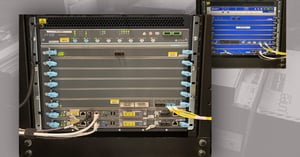
- In addition, a new SRX380 tops up the SRX300 Series and provides up to 10G throughput and 10G interfaces.
- All new Security devices are licensed to use UTM and IDP functionality so that we can prototype and prepare Deep Packet Inspection and Security Enforcement scenarios.
- To manage and control the physical devices, a software combination of JUNOS Space with Security Director and Policy Enforcer is used within the XT³Lab, which enables the reaction to and mitigation of threats at the source e.g. after the SRX devices detected them.
2: Routing
The Routing platforms in high-performance networks also need to be expanded, upgraded or replaced by more powerful models in accordance with the constantly growing bandwidth requirements. In order to be able to comprehensively map the countless deployment scenarios in the network core, edge or border, the router portfolio in the XT³Lab has also been expanded:
- With an MX10008 quipped with a 24x100GE linecard, the latest generation of MX technology has found its way into the XT³Lab. Designed as universal chassis, some parts of the system equal assemblies in PTX and QFX platforms. The system is already in place and operational at a number of our customers and, as a 100/400G-centric platform, will be a core component for the coming years.
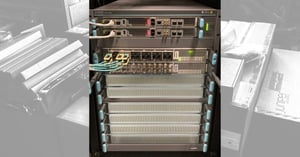
- New cards and fabrics have been added to the existing MX240 and MX480 installed base in order to stay in sync with the deployments happening at our customers. The SCBE3 fabric card allows for up to 1.5 Tbit/s per slot which is the ideal prerequisite for deploying the MPC10E-10C card with up to 10x100G or 2x400G plus 4x100G interfaces. Furthermore, an MPC7E-Mrate providing 4x100G or 12x40G interfaces has been added – currently one of the most deployed cards in our customer base.

- On top of that, with MX-SPC3 a close relative of the SPC3 used in the new SRX5600 system has been installed to the MX series chassis in order to enable adding state full services such as CGNAT, FW, IPSEC, VPN etc. This can be particularly useful in setups in which a system needs to fulfill multiple roles e.g. scenarios in service provider networks in which BNG and CGNAT are combined.
- A new arrival to the XT³Lab is the PTX Series. So far only used in the largest Tier 1 networks, the new generation of the PTX series now also includes smaller devices with lower space requirements and power consumption. Especially the newest entry into the PTX family, the PTX10001-36MR, with up to 9,6Tbit/s offering 100/400G interfaces in 1RU is an interesting device for many use cases, and accordingly first customer POCs have already started.
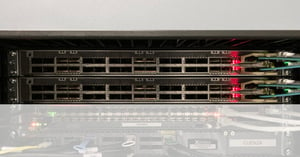
- In addition, a PTX10003-80C was installed in the XT³Lab, which offers up to 80x100G interfaces and up to 8Tbit/s throughput in 3RU. Both PTX device types are running JUNOS EVO.
3: Metro
For Metro scenarios both in fixed broadband networks and in mobile 4G / 5G expansions, two new types of the ACX series are available in the XT³Lab, which can be used as business PEs and/or aggregation devices:
- With a depth of only about 300 mm, the ACX710
is an interesting option for scenarios in which space is of the essence. The system offers 24x10G plus 4x100G interfaces and is part of the Metro/MPLS portfolio.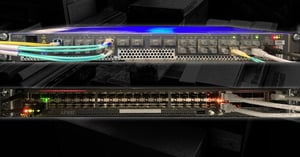
- Its bigger brother, the ACX5448-M, offers 44x10G and 6x100G interfaces as well as MACSEC on all downstream ports.
4: Switching
Switching is an issue both in provider networks and in the Next-Gen Data Center, the core of a modern corporate network. In order to convey the constantly growing data traffic with high performance, the switch systems must be able to map new protocols and software. Thus, also the high-end switching department of the XT³Lab has received a tech refresh to close the last few gaps:
- In order to complement the existing EX4600 switches, a pair of EX4650-48Y offering 48x25G and 8x100G interfaces has been added. They can be used for many different scenarios e.g. campus aggregation, Mist Wired Assurance setups or high speed campus edge devices.
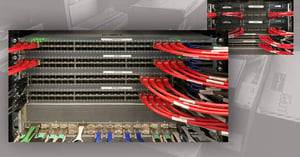
- The existing equipment of QFX device pairs from more or less every QFX5000 series / generation was supplemented by two QFX5200-32C. These Switches are not only used in our Next-Gen DC architectures, but are also quite versatile in terms of alternative NOS, and can run JUNOS, JUNOS EVO as well as Sonic.
Germany’s largest Juniper Test Lab – XT³Lab Hardware Overview (July 2021)
The XT3Lab covers almost the entire portfolio of Juniper technologies.
The Benefits:
Consulting, network designs and extensions based on practical know-how
With the investment in the expansion, we have raised the XT³Lab and the variety of demo options of Juniper technologies in Germany to a new level. Above all, however, we enable our customers to get to know the latest Juniper hardware and software locally “beyond the data sheets” and to test and qualify it for the usage in their networks.
Because in connection with devices from other vendors and through the utilization of our IXIA router tester with up to 10x100G interfaces, the XT³Lab provides a wide range of options for simulating high-performance networks and testing the devices with regard to load, scaling and interoperability. The various components can be thoroughly tested for use in real network scenarios and examined for possible problems, before they are integrated into a productive environment. It is particularly efficient when using XFAST, our in-house development for test automation, which minimizes the effort of software testing – even for long-term tests – and at the same time maximizes the scope and thus the accuracy of the results. The infrastructure is managed using Yukon, the Xantaro Service Engine.
Since the arrival of the delivery and installation of the components in the XT3Lab, our engineers have already accompanied numerous customer tests and qualified various components for the expansion of their individual infrastructures. And of course, all new network designs by our network architects and engineers also benefit from the equipment and capacities of the laboratory environment, regardless of whether it involves individual planning or Xantaro’s own solutions such as the Next-Gen Data Center. Because with proof-of-concept tests in advance of implementation, the consulting team is constantly gaining new knowledge and is constantly expanding the know-how and technological expertise that ultimately benefits our customers.
Share your opinion with us!
Your perspective counts! Leave a comment on our blog article and let us know what you think.
.png?width=300&height=300&name=Design%20ohne%20Titel%20(7).png)


